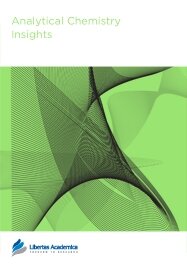

Publication Date: 09 Sep 2008
Journal: Analytical Chemistry Insights

A comparison of detection limits of gas chromatography-mass spectrometry (GC-MS) in selected ion monitoring (SIM) with gas chromatography-tandem mass spectrometry (GC-MS/MS) in selected reaction monitoring (SRM) mode with both electron ionization (EI) and negative-ion chemical ionization (NCI) are presented for over 50 pesticides ranging from organochlorines (OCs), organophosphorus pesticides (OPs) and pre-emergent herbicides used in the Canadian prairies (triallate, trifluralin, ethalfluralin). The developed GC-EI/SIM, GC-NCI/SIM, and GC-NCI/SRM are suitable for the determination of pesticides in air sample extracts at concentrations <100 pg µL−1 (<100 pg m−3 in air). No one method could be used to analyze the range of pre-emergent herbicides, OPs, and OCs investigated. In general GC-NCI/SIM provided the lowest method detection limits (MDLs commonly 2.5–10 pg µL−1) along with best confirmation (<25% RSD of ion ratio), while GC-NCI/SRM is recommended for use where added selectivity or confirmation is required (such as parathion-ethyl, tokuthion, carbofenothion). GC-EI/SRM at concentration <100 pg µL−1 was not suitable for most pesticides. GC-EI/SIM was more prone to interference issues than NCI methods, but gave good sensitivity (MDLs 1–10 pg µL−1) for pesticides with poor NCI response (OPs: sulfotep, phorate, aspon, ethion, and OCs: alachlor, aldrin, perthane, and DDE, DDD, DDT).
PDF (441.96 KB PDF FORMAT)
RIS citation (ENDNOTE, REFERENCE MANAGER, PROCITE, REFWORKS)
BibTex citation (BIBDESK, LATEX)
XML
PMC HTML

I have published more than thirty research papers in internationally reputed high impact factor journals including Libertas Academica publications, Proteomics Insights and Analytical Chemistry Insights. I have no hesitation in saying that Proteomics Insights is highly efficient for its rapid and high quality review process and keeping the authors informed at each stage of the publication process. I recommend this journal for students, teachers and research workers who wish to publish their work. ...

All authors are surveyed after their articles are published. Authors are asked to rate their experience in a variety of areas, and their responses help us to monitor our performance. Presented here are their responses in some key areas. No 'poor' or 'very poor' responses were received; these are represented in the 'other' category.See Our Results
Copyright © 2013 Libertas Academica Ltd (except open access articles and accompanying metadata and supplementary files.)
FacebookGoogle+Twitter
PinterestTumblrYouTube